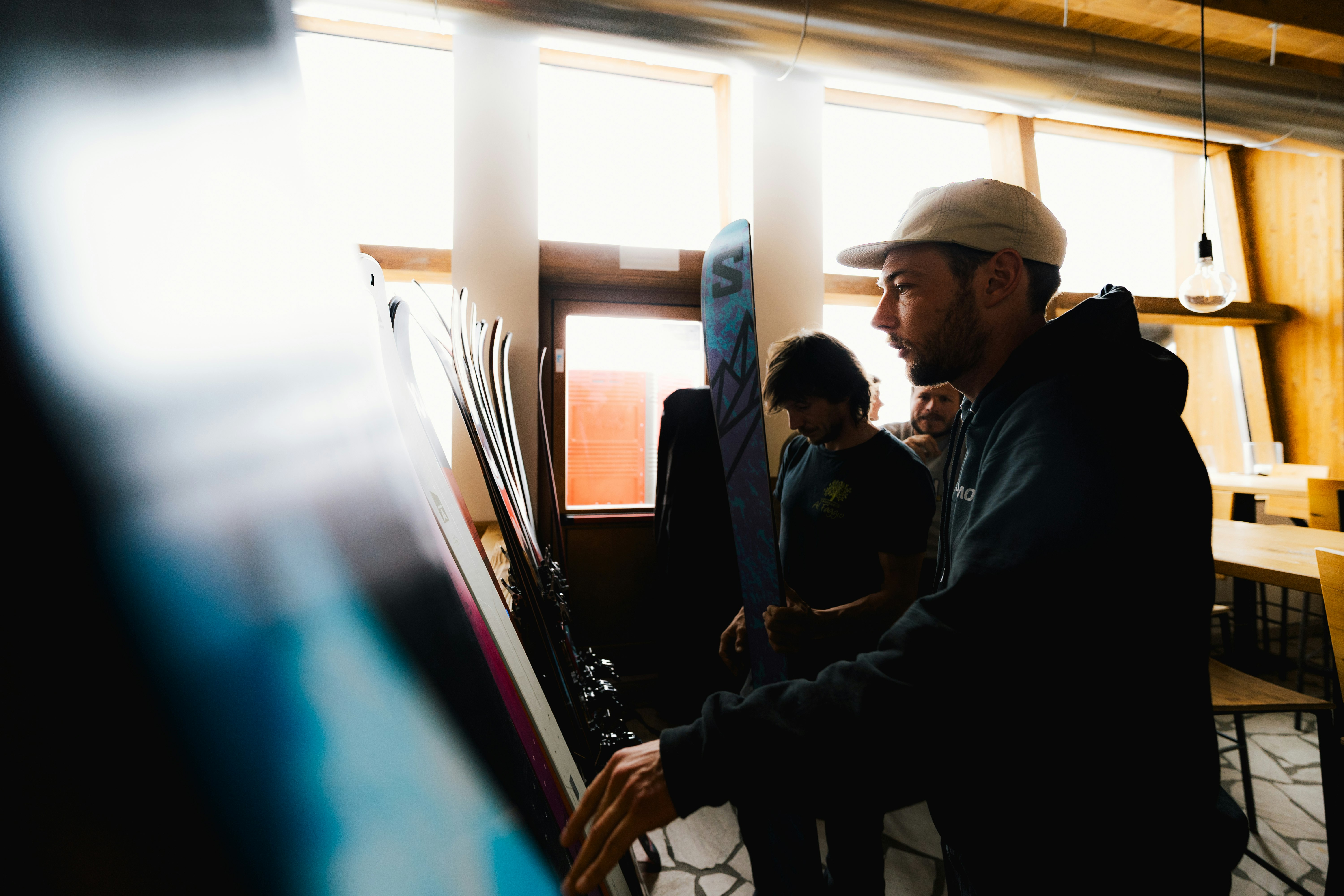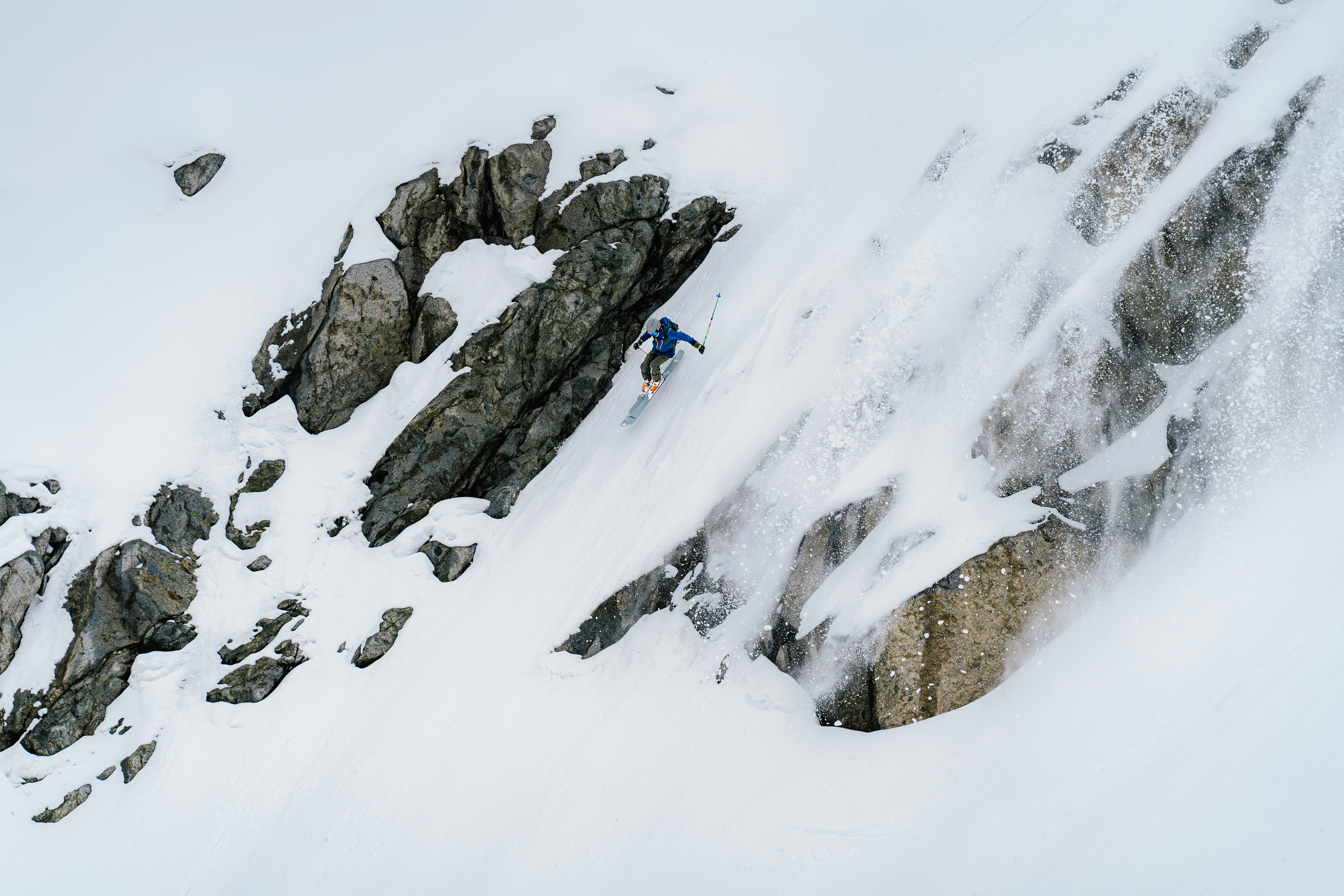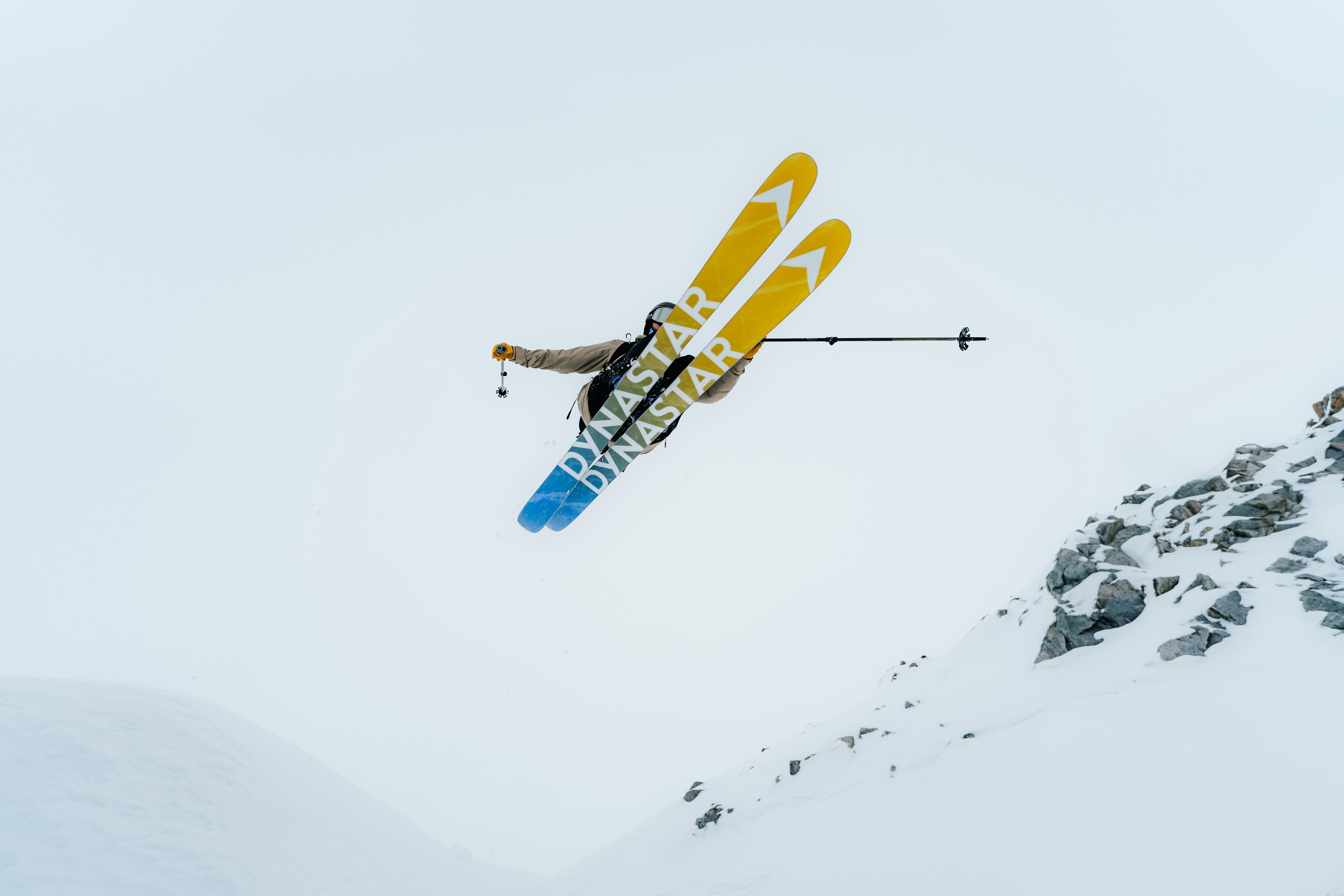Free: skis
We’ll be right back after this commercial break
- Author: Niccolò Zarattini
- Photographer: Riccardo De Conti
We usually see more new releases in this segment—partly as the development and manufacturing process is less complex compared to that of boots—but this year, things have been much quieter.
The pace of evolution has slowed, perhaps as the physical limits in terms of size and weight have been reached. There’s no hiding from it; if you want performance you need a stiff ski, which means weight. Beefier construction means stability at speed, responsive flex, and dampness.

A ski enters freeride territory from around 1.5 kg (approx 3.3 lbs.) up, obviously depending on the length. Though it’s when you get to around 2 kg and over (4.4 + lbs.), that things really start to get interesting. When the skier no longer has to worry about how much power they need to transfer to their skis, they can concentrate on skiing. But they need an adequate ski/boot/binding setup.

There are three main types of ski in the freeride category: freeride touring, all mountain and big mountain/backcountry. In the first we can find mid-fat, semi-light skis that aim to strike the right balance between float and weight, with a wide range of compatible bindings, from tech to hybrid to step in. It’s a sub-category that uses the tech and materials you find in pure touring skis, mainly paulownia and carbon or glass fiber, depending on the underfoot width. They’re perfect for anyone who wants to take on a decent amount of elevation gain in fresh snow, and float their way downhill.

Then we come to the all-mountain segment, much influenced by alpine skiing, designed for skiability and stability on all types of terrain. Here, you find more solid woods used, like beech, ash and poplar, often reinforced with titanal in areas that undergo heavier stress, as well as more conventional
Share this article

